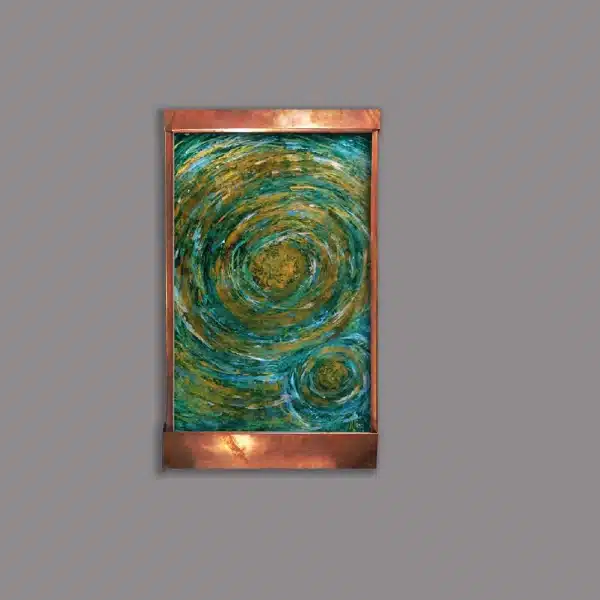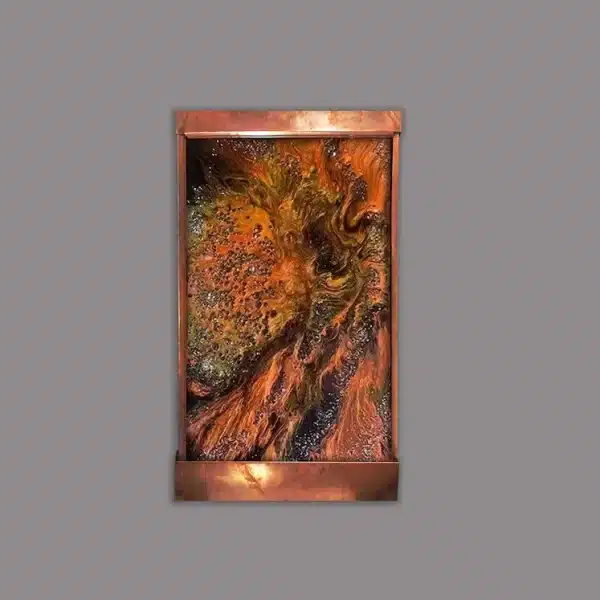Introduction
Cities are in a constant state of evolution. As populations grow, urban spaces become more compact, and the demand for accessible green areas increases. Large-scale public parks, while iconic and essential, often face challenges of space, funding, and upkeep. In response, urban planners, designers, and local governments are turning toward a smaller but highly impactful solution: urban micro-parks.
These tiny public spaces, sometimes nestled into forgotten corners of the city, reclaimed parking lots, or overlooked traffic islands, are redefining how people experience nature and civic life in dense urban areas. What makes them especially striking is the incorporation of statement fountains: bold water features that transform these modest spaces into cultural touchpoints, conversation starters, and oases of calm.
This blog post dives into the world of micro-parks with statement fountains, exploring their origins, design principles, cultural significance, and future potential. We’ll also highlight inspiring examples from across the globe, showing how these miniature urban wonders make a disproportionately large impact.
The Concept of Urban Micro-Parks
What Are Micro-Parks?
Micro-parks, also called “pocket parks” or “vest-pocket parks”, are small-scale green spaces typically under an acre in size. They are strategically placed in densely populated neighborhoods where large parks may be inaccessible. Despite their size, they serve a critical function by offering urban dwellers respite from the concrete jungle.
Origins of the Micro-Park Movement
The concept of pocket parks gained traction in the 1960s and 1970s, especially in cities like New York, where land scarcity made traditional parks impractical. The idea was simple yet revolutionary: convert underused spaces into community assets. Today, micro-parks are more than just functional; they have become symbols of creative urban design.
Why Add Statement Fountains?
Fountains have historically been associated with civic pride, artistry, and communal gathering. In micro-parks, a statement fountain serves multiple purposes:
- Visual anchor: It transforms a small space into a landmark.
- Acoustic buffer: The sound of flowing water masks traffic noise, enhancing tranquility.
- Climate aid: Evaporation from fountains helps cool surrounding areas, addressing urban heat.
- Cultural symbol: Fountains often double as public art installations, reflecting local identity.
Design Principles of Micro-Parks with Fountains
1. Maximizing Limited Space
Designers of micro-parks face the challenge of working with minimal square footage. Every element, from seating to greenery to water features, must be carefully considered. A fountain acts as both art and utility, offering aesthetic appeal while influencing the microclimate.
2. Integrating Nature and Water
Greenery softens the hardscape of cities, but water introduces movement, reflection, and sound. Together, they elevate the sensory experience, making even a 500-square-foot park feel alive and immersive.
3. Accessibility and Inclusivity
A successful micro-park is open, accessible, and inclusive. Statement fountains often have seating or plaza space around them, encouraging interaction among diverse groups of people, office workers on lunch break, families, or seniors looking for a quiet spot.
4. Sustainable Infrastructure
Modern fountains emphasize sustainability:
- Closed-loop systems recycle water.
- Solar-powered pumps reduce energy use.
- Rainwater harvesting integration allows fountains to operate with minimal environmental impact.
5. Aesthetic Statement
The fountain often becomes the visual centerpiece. Whether sculptural, interactive, or minimalist, it provides an identity to the space. Some cities even commission local artists to design bespoke fountains, merging art with functionality.
Cultural and Social Benefits

1. Revitalizing Forgotten Spaces
Abandoned lots or neglected urban nooks are often transformed into vibrant community hubs through micro-parks. A bold fountain ensures the space feels intentional, curated, and worth visiting.
2. Encouraging Social Interaction
Water features naturally attract people. Children play around them, couples sit nearby, and strangers strike up conversations. This fosters community cohesion in neighborhoods where isolation might otherwise prevail.
3. Mental and Emotional Wellbeing
Urban living can be stressful, with constant noise, pollution, and density. Fountains provide calm through multisensory engagement: the sight, sound, and feel of water offer psychological relief.
4. Cultural Identity and Artistic Expression
Fountains often reflect the cultural or historical narrative of a city. For instance, a micro-park in a historic district might feature a classical design, while one in a tech hub might opt for a futuristic, LED-lit water installation.
5. Tourism and Economic Boost
Even small parks can draw visitors if the fountain is iconic. Think of it as the “Instagram effect”: a striking fountain design can put a neighborhood on the map, driving foot traffic to nearby businesses.
Notable Examples Worldwide
Paley Park, New York City
Often cited as the quintessential pocket park, Paley Park is just 4,200 square feet but features a dramatic 20-foot-high waterfall fountain. The rushing water muffles Midtown traffic, creating a serene environment in one of the busiest cities on earth.
Parque de Bolsillo, Santiago, Chile
Santiago has embraced micro-parks by converting empty lots into “pocket parks” featuring contemporary fountains. These spaces are particularly popular among office workers, offering quick escapes during the workday.
Mini-Park at Trafalgar Square, London
While Trafalgar Square is massive, a smaller satellite micro-park nearby incorporates a modernist fountain installation, showing how micro-parks can complement larger urban landmarks.
Tokyo’s Urban Niches
In Tokyo, micro-parks are often squeezed between high-rise buildings. Many include zen-inspired fountains, simple trickling stones or bamboo water spouts—that reflect Japanese cultural aesthetics.
Melbourne’s Lane-Way Fountains
Melbourne has redefined its laneways by adding pop-up micro-parks with striking fountains, sometimes temporary and experimental in nature. These serve as rotating art installations while cooling urban heat pockets.
The Role of Technology in Fountain Design
Smart Fountains
Many statement fountains are now equipped with smart sensors that adjust water pressure, lighting, and flow depending on the time of day, crowd presence, or weather conditions.
Interactive Features
Interactive fountains invite play: jets that respond to motion sensors allow children (and playful adults) to engage with the water, transforming the fountain into a social activity.
Sustainable Engineering
From low-energy LED lighting to pumps powered by solar panels, fountain design is increasingly mindful of climate concerns. Some even reuse graywater from nearby buildings, reducing strain on municipal water supplies.
Challenges and Criticisms
Maintenance Costs
While fountains enhance appeal, they require regular cleaning, pump maintenance, and safety checks. Cities must allocate sufficient budgets for upkeep.
Accessibility Concerns
Poorly designed micro-parks risk excluding individuals with disabilities. Designers must ensure that fountains and seating areas are ADA-compliant.
Overemphasis on Aesthetics
Critics argue that some micro-parks prioritize spectacle over function, creating “Instagrammable” spaces without truly addressing community needs.
Risk of Overcrowding
Ironically, the popularity of micro-parks can lead to overcrowding, undermining their role as tranquil spaces. Designers must balance attractiveness with usability.
The Future of Micro-Parks with Custom Fountains
As cities continue to densify, the demand for compact, multifunctional, and aesthetically powerful public spaces will grow. Future trends may include:
- Augmented Reality Fountains: Blending digital projection with water displays.
- Community Co-Design: Engaging local residents in the fountain’s concept and design.
- Mobile Pop-Up Fountains: Temporary installations in seasonal micro-parks, adaptable to festivals or urban experiments.
- Climate-Responsive Designs: Fountains that adapt based on environmental data, contributing to cooling and air quality improvements.
The integration of art, sustainability, and technology ensures that micro-parks will remain critical components of future cities.
Conclusion
Urban micro-parks with statement fountains demonstrate how small-scale interventions can yield large-scale impacts. They transform forgotten spaces into vibrant social hubs, improve mental wellbeing, reinforce cultural identity, and even contribute to sustainability.
While challenges remain in terms of maintenance and accessibility, the potential of these spaces is undeniable. As urbanization accelerates, micro-parks remind us that even the tiniest corners of the city can become sources of joy, beauty, and connection, all anchored by the timeless allure of water.






